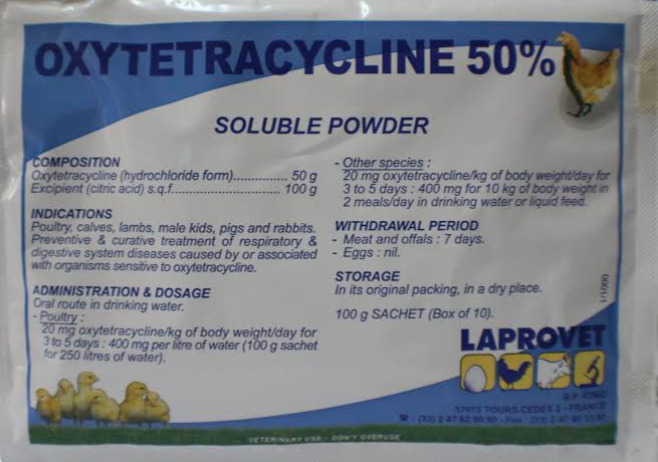
Antibiotics are drugs used for curing infections in animals and human. They are used to treat or prevent some types of bacterial infection. But not effective against viral infections. The more antibiotic is used, the lesser it becomes effective . They no longer cure the diseases they are used for and their effect on the bacteria they are ment for is reduced. This is because the bacteria had developed resistance to the antibiotic. This therefore means that the more antibiotic is used, the greater the chance that antibiotic resistance will be developed. Therefore, antibiotic should be used when they are really needed and prescribed by the veterinarian.
The use of antibiotics is band in developed countries due to their residual effects. But in developing countries like Nigeria, probiotics are under used. Probiotics are microorganisms that, when administered in adequate amounts, help support a healthy gut and immune system in humans and animals.
Antibiotics like penstrep, (penicillin and streptomycine) are used which have residual effects on birds. Examples of probiotics include Acetobaccillus. Other types of antibiotics used in poultry include Tetracyclines, aminoglycosides, Ampicillin, Colistin sulfate, Amoxicillin trihydrate and sulfonamides,
It should be noted that sick birds are not to be vaccinated but should be treated with antibiotics because the vaccines will increase the stress on them. Therefore, antibiotics should be mixed with the birds vaccine.
USES OF ANTIBIOTIC
1. It is used to treat or cure disease (therapy). It is used for the treatment of intestinal infections such as colibacillosis, necrotic enteritis, and other diseases caused by Salmonella, E. coli, or Clostridium spp.
2. It is used to prevention disease (methaphylaxis). And
3. It is a growth promoter
EFFECTIVENESS OF ANTIBIOTICS ON INJURED BIRDS
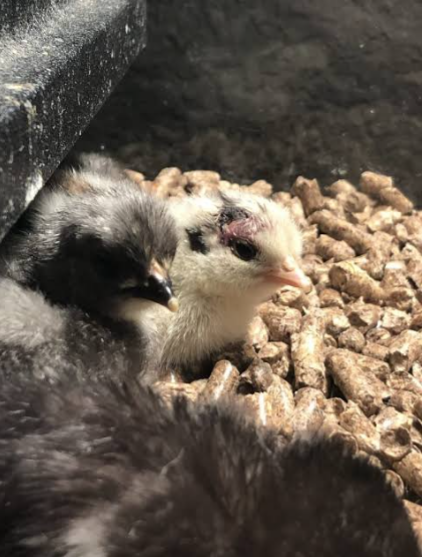
1. Antibiotics seal the blood
2. Antibiotics taste bitter therefore, if other bird pick on the injury, they will repel
3. Pasted birds should be placed on antibiotics. This are birds infected by fowl typhoid. They are infected in the second or third week of purchase
METHOD OF ANTIBIOTIC ADMINISTRATION
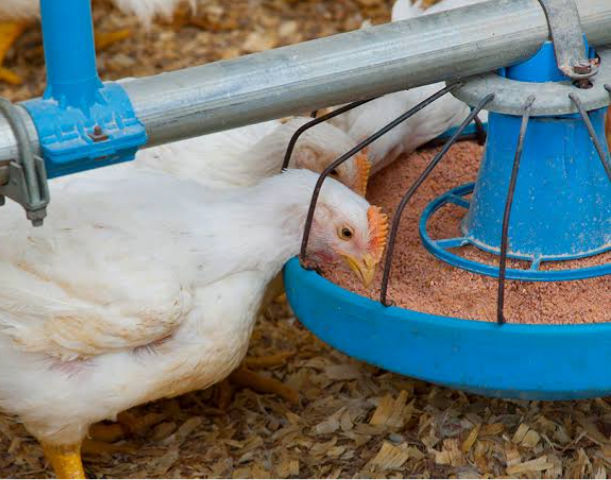
The method of administration and the volume of antibiotic used vary depending on the stage of production and the risk of disease. Antibiotics can be administered to birds either individually or as a flock treatment.
For poultry, antibiotics can be administered through :
-Oral administration in drinking water and feed medication ,
-In the case of serious disease, parenteral administration can be used.
ORAL ADMINISTRATION
This is for large numbers of birds so as to medicate them at the same time. The antibiotics can either be mixed with water for drinking or with the feed of the birds. Producers of antibiotics do prescribe the recommended quantity to mix and the duration for administration, usually between 5 to 7 days duration.
ADVANTAGES OF ORAL ADMINISTRATION OF ANTIBIOTICS THROUGH WATER
1.The cost of administration is low.
2. The work load is low. No drudgery.
3. It is easy to administer to birds.
4. It gives immediate therapeutical care for all diseased or endangered animals in the flock and
5. A quick change of drug and/or dose is possible.
PARENTERAL ADMINISTRATION :
This is the administeation of liquids antibiotic by bypassing the gastrointestinal system. It is used in the case of acute disease with serious losses of birds. The parenteral route for antibiotic medication administration can involve intravenous, intramuscular, and subcutaneous, routes using injection.
ADVANTAGES OF PARENTERAL ANTIBIOTIC ADMINISTRATION
1. It deliver the precise dose of a medication rapidly since it is being injected directly into the tissue and circulatory system, bypassing liver metabolism.
2 It is the best option if oral fluids administration cannot be used.
3. parenteral drugs given intravenously have 100% bioavailability.
DISADVANTAGES OF PARENTERAL ANTIBIOTIC ADMINISTRATION
1. Unsafe injection practices resulting in exposure to infections.
2. Antibiotic administeration may be absorbed rapidly into the body, increasing the risk for overdose.
3. It is a more invasive route of drug administration. It can spread to other healthy tissues in the bird
4. Parenteral route of antibiotic administration can cause fear, pain, tissue damage, and increased risk of infection.
There are factors that determine the method of administration of a drug in avian species. Such factors include : animal welfare, avoidance of tissue damage, ease of administration and stress. Farmers must put these factors into consideration before administering antibiotics to their birds.
PROBIOTICS
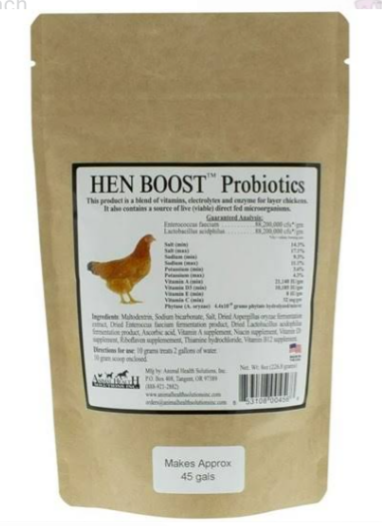
The abuse of antibiotic over the years had lead to bacterias developing resistant to the antibiotics. This had become a serious concern to farmers concerning their animal welfare, human health, and the environment. Also, this had resulted in complete banned in the use of antibiotics in treating animal diseases not caused by viruses and boosting their growth in developed nations . Therefore, this had resulted in urgent need to find alternatives to antibiotics for improving welfare and growing performance in the poultry industry.
In recent years, probiotics had been developed and tested as a possible alternative to antibiotics in animal health .
Probiotics, an alternative to antibiotics, have brought about lots of beneficial effects on humans and animals in recent years. Supplementing animal diets with probiotics has improve feed efficiency and growth performance, immune function, morphology of the small intestine in poultry birds and reduced the mortality rate of broilers caused by Escherichia coli.
There are two types of live microorganisms fed in poultry probiotics – yeast and bacteria. Although most probiotics are bacteria. Yeast( Saccharomyces cerevisiae) is the most documented and used yeast probiotic in poultry and animal production.
Other probiotic include: Bifidobacterium spp , Streptococcus faecalis, Bacillus spp. Barnesiella spp, Lactobacillus acidophilus, and Clostridium butyricum
ADVANTAGES OF LIVE YEAST PROBIOTICS ON BIRDS
1.The live yeast component promotes a favorable microbiota balance and healthy gut and enzymatically inhibits microbial toxin activity (i.e., Clostridia and E. coli toxins).
2. The yeast cell wall components — B-glucans and Mannan oligosaccharides (MOS) — support immune system modulation and pathogen binding. As a result, birds are healthier and perform better in the areas of weight gain, livability and feed conversion.
3. Levucell SB a live yeast probiotic mixed with broiler feed result in an increase in weight , improvement in feed conversion and a consistent reduction in mortality
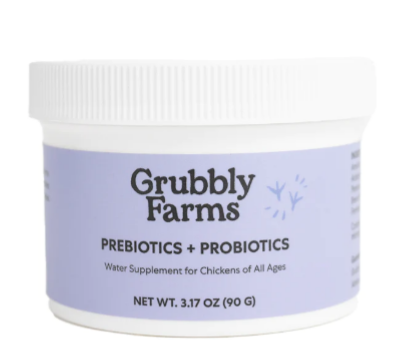
DIFFERENCE BETWEEN PROBIOTICS AND ANTIBIOTICS
Both probiotics and antibiotics can improve growth Performance. But have the following differences
1. Antibiotics can increase the abundance of harmful bacteria and drug-resistant genes, while probiotics can increase Barnesiella abundance, which is related to a decrease in the drug-resistant gene expression.
2. Probiotics treatment improved small intestinal morphology and fecal discharge, while antibiotics have no significant effect on the small intestinal,
3. Long-term usage of antibiotics may result in antibiotic resistance by pathogens whereas, there is no development of resistance or acquisition of resistance genes by pathogenic bacteria in relation to probiotic being used as feed additive.
Therefore, probiotics are alternative to antibiotics in treatment of bacterial infection.

TERMINOLOGIES
ANTIBIOTIC PROPHYLAXIS : When Antibiotics are given as a precaution to prevent an infection. It is also used after surgery, Bites or wounds, and Recurring infection.
ANTIBIOTIC RESISTANCE : This means when antibiotic stop functioning and has no more effects on the bacteria it is mental to control.
BIOAVAILABILITY : This is the proportion of an administered drug that reaches the systemic circulation
